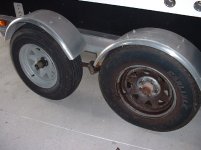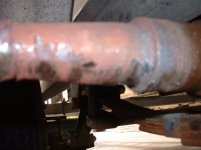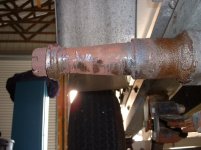RidgeRunner
God
Got to where I was going and discovered one axle on the trailer had thrown off the buddy bearings and spit the bearings out. (both sides)
Strange thing was, I had no idea. Pulled just fine, next day moved it from the wash station to the shed and I could hear some grinding with the window down but with the A/C on in the truck and windows up, nothing.
Q. These axles are not the posi-lube type. Are buddy bearings the best/only way to go?
Plan on seeing what the carnage is tonight. Axle is prob ok, hub got hot enough to burn the paint off. The price of a half gallon of scallops just went up.
Strange thing was, I had no idea. Pulled just fine, next day moved it from the wash station to the shed and I could hear some grinding with the window down but with the A/C on in the truck and windows up, nothing.
Q. These axles are not the posi-lube type. Are buddy bearings the best/only way to go?
Plan on seeing what the carnage is tonight. Axle is prob ok, hub got hot enough to burn the paint off. The price of a half gallon of scallops just went up.




 Ask me how I discovered that. The axle was made by Tie Down Engineering and I believe they call their system "Posi Lube." Looking thru a couple of catalogs West wants a pretty penny for the galvanized hubs that Tie Down makes. That repair will need to wait for another day.
Ask me how I discovered that. The axle was made by Tie Down Engineering and I believe they call their system "Posi Lube." Looking thru a couple of catalogs West wants a pretty penny for the galvanized hubs that Tie Down makes. That repair will need to wait for another day. 


